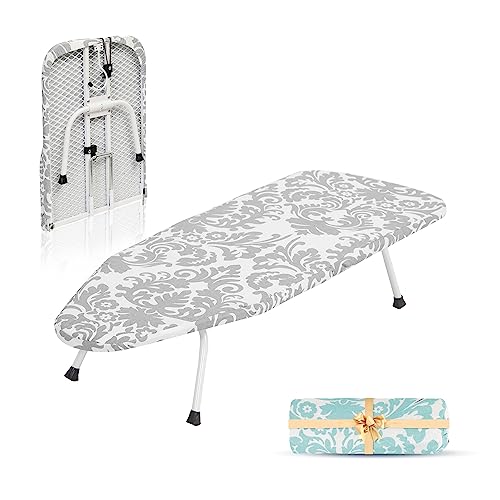Fabric experts reveal how to wash viscose fabric at home so you can skip dry cleaning without damaging your clothes
Keep this silk substitute looking its best with five expert-approved laundry steps


Viscose fabric is a fantastic, semi-synthetic alternative to silk made from cellulose fibers found in wood pulp. Also known as viscose rayon, this fabric comes with similar laundry concerns to silk and doesn't react well to water or heat.
This begs the question, how do you wash viscose fabric without taking it to the dry cleaner? Laundry experts say hand washing is the way to go.
Here, our pros break down the step-by-step process of washing viscose fabric to help you avoid irreversible damage.
How to wash viscose fabric
Much like washing silk sheets or washing a silk pillowcase, you should avoid getting viscose wet too often as moisture weakens the fibers. As a result of this, a lot of viscose is dry-clean only. It is important to check the laundry symbols on the care tag first and consider using an expert cleaning service to prevent damage.
If your viscose is not dry clean only, or you are in a pinch and want to try cleaning it yourself, here is how the pros tackle viscose while minimizing damage to the fibers.

You will need:
- A large basin or a clean sink
- A laundry bleach alternative, like Molly’s Suds from Walmart
- A clean cloth
- A gentle detergent, such as Heritage Park Silk and Wool Detergent from Walmart
- A thick, clean towel
Here are the steps recommended by fabric and laundry pros for washing your viscose garments.
1. Pretreat stains
The most important golden rule for stain removal is to pretreat stubborn marks before washing to avoid setting the stain. When dealing with stains on viscose, Salvador Villarreal, dry cleaning expert and owner of VIP Cleaners & Laundry recommends using bleach alternatives, as chlorine bleach degrades viscose.
Design expertise in your inbox – from inspiring decorating ideas and beautiful celebrity homes to practical gardening advice and shopping round-ups.
Dab the stain with a clean, white cloth dampened with water and a bleach alternative such as Oxi-clean, from Walmart. The stain should start to lift away onto the cloth.
2. Hand wash inside out with gentle detergent
With tough stains dealt with, you can hand wash your viscose item. Ahmed Ati, fabric expert and designer at Native Threads, says viscose is one of the many things to never put in a washing machine, even on a gentle cycle, as it can be too agitating for the delicate fabric. Instead, hand wash the item inside out.
‘Fill a basin with cold water and add a mild detergent designed for delicate fabrics, such as Woolite Gentle Cycle, from Walmart or Ecover Delicate, from Amazon,’ Ahmed recommends. ‘Submerge the viscose garment and gently agitate it. Like hand-washing wool, avoid scrubbing or twisting, as viscose is prone to stretching and damage.'
After washing, rinse the garment in clean, cold water until all detergent has been removed.
3. Squeeze and roll to remove water
With the garment washed, you need to remove the excess moisture quickly to avoid lasting damage. To make this process easier, Salvador Villarreal, a dry cleaning expert, suggests laying the item on a dry, clean towel and rolling the two up tightly together, like rolling sushi. Salvador adds, ‘Once you've rolled it, gently squeeze out excess water. Avoid wringing or twisting which causes damage.'
4. Lay flat to dry
With the moisture removed, it is vital you air dry laundry, rather than put it in the dryer.
Ahmed Ati, a fabric expert, says ‘Lay the garment flat on a drying rack or another clean towel and let it air dry away from direct sunlight or heat.’ It is also a good idea to take the time to reshape the garment as it lays out to dry so that it does not end up misshapen and to help prevent any shrinkage.
To speed up the drying process, consider using a dehumidifier to circulate dry air around the garment and help remove excess moisture from the air. For the best results, situate the dehumidifier underneath the garment on a clothes drying rack. If you do not have a dehumidifier, open the window to allow fresh air circulate and lift away some of the humidity.
5. Use the silk setting to iron
If you need to remove wrinkles from viscose fabric after it has dried, never use a steamer, as the heat and moisture will cause lasting damage. Ironing is the best way to get wrinkles out of clothes in this instance.
Use either the lowest setting on your iron, or the silk setting to prevent damage. Ahmed Ati, fabric expert advises considering using a pressing cloth - a barrier layer between your iron and the item of clothing - to protect the fabric from direct heat.

If you don't iron often but have delicate silk or viscose fabrics that wrinkles after washing, consider investing in a mini ironing board. We like this one as it comes with two covers you can wash, plus the legs are collapsible and the board itself folds in half making storing it a breeze. Use it on a tabletop if you prefer standing to iron, or pop it across your lap whilst sitting comfortably on the couch.
If you are ever concerned about damaging your viscose clothing or linens at home, you should always take it to a dry cleaner, or consider dry cleaning clothes at home. This will prevent any damage – especially for pricier garments or items with interfacings, structure, or lots of hard wear.

Chiana has been at Homes & Gardens for two years and is our resident 'queen' of non-toxic living. She spends most of her time producing content for the Solved section of the website, helping readers get the most out of their homes through clever decluttering, cleaning, and tidying tips. She was named one of Fixr's top home improvement journalists in 2024.